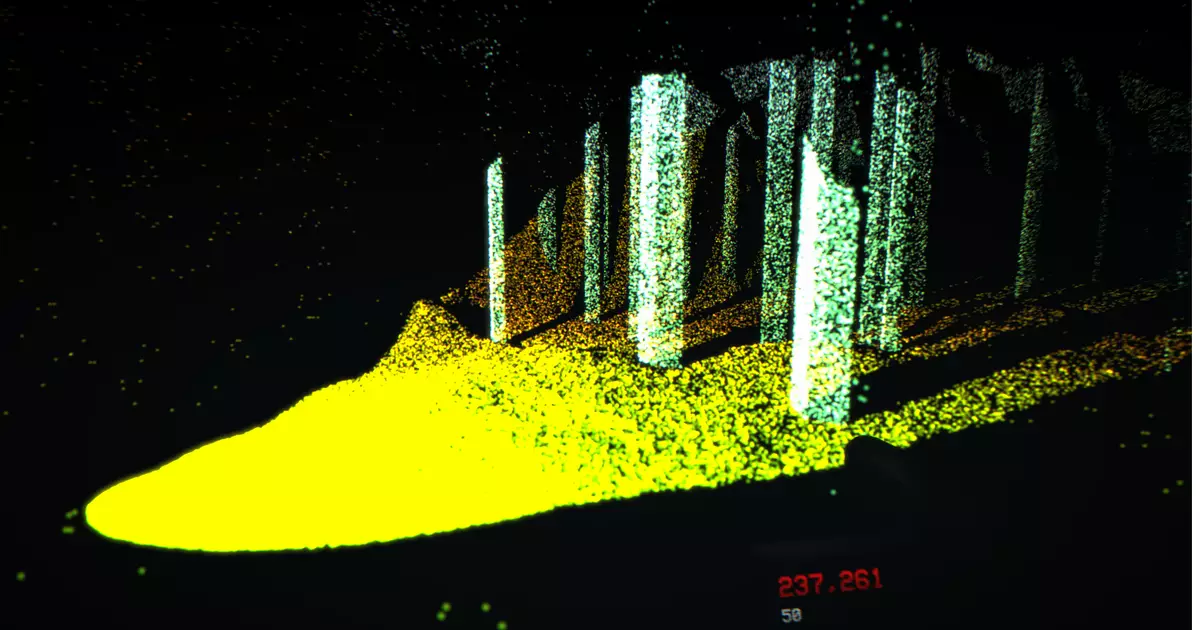LiDAR, which stands for Light Detection and Ranging, represents a significant leap in how we perceive and interact with our surroundings. By employing laser beams to gauge distances and mapping them based on the time it takes for each pulse of light to return, LiDAR technology has proven invaluable across various scientific inquiries. From the lush canopies of the Amazon rainforest, where it meticulously traces the heights of trees, to the hidden depths of cave systems, this technology has broadened the frontiers of cartography and environmental monitoring. However, amidst the sterile edges of science, a more vibrant and evocative application emerges—one that intertwines technology with artistic expression.
LiDAR in Gaming: A New Aesthetic in Exploration
The ‘LiDAR Exploration Program,’ developed by KenForest, breathes life into the abstract mechanics of LiDAR through a gaming lens. Described as a “relaxing atmospheric horror” experience, the game blends exploration with a unique sense of unease—but not in the way traditional horror games do. Instead of jump scares or grotesque imagery, LiDAR Exploration utilizes the limitations and peculiarities of its scanning technology to create a discomforting ambiance that lingers. By wielding a handheld LiDAR scanner, players not only gather data but also meld the digital landscape into visibility, resulting in a playful yet profoundly unsettling experience.
The gameplay mirrors the mechanics of relaxing simulators, such as PowerWash Simulator, where the aim is not immediate thrills but a soothing trip through meticulously crafted environments. However, the static serenity of the landscapes deceitfully disguises the unsuspecting horror lurking beneath their surfaces. In a world where players have the power to generate solid forms and structures, the unsettling realization that these elements are often hollow from different angles echoes a deeper metaphor: our perceptions can be deceiving.
Atmosphere and Aesthetic Insights
While maneuvering through the game’s tranquil yet foreboding terrain, players are beckoned to slow down and observe—an invitation both to meditate on the environment and to engage with the medium of light itself. The painstakingly rendered visuals oscillate between sensation and abstraction, turning the act of scanning into an artistic endeavor. There’s a profound elegance in the graphical representation, where thinner beams unveil intricate details, while broader sweeps create large silhouettes. This method not only cultivates a meticulous beauty but redefines the role of light in immersive spaces.
Moreover, the unique interface, with its right-click full-screen scan, flips the conventional gaming paradigms. It challenges players to confront their understanding of three-dimensionality and perspective. The initial static image, like a photograph, shifts into a full-bodied entity upon movement, creating an unsettling dissonance between perception and reality, thereby enhancing the psychological aspect of the game.
An Element of Surrealism
While traversing the mapped landscapes, the player is often reminded of the artistry inherent in LiDAR technology. Each foray into the forest, much like an artist’s brushstrokes, reveals the pandemic charm found in nature’s intricate forms. Dropping into a hyper-focus on light and shadow transforms the experience into a meditative retreat. The elation derived from narrowing beams to accentuate the fine details is not unlike an artist investing hours into the most delicate aspects of their canvas.
In a world often oversaturated with frenetic action and overwhelming stimuli, ‘LiDAR Exploration Program’ reminds us of the quieter moments in gaming—the beauty of introspection and the power of light to create tension and revelation. By converging science and art within a gameplay framework, KenForest has curated an experience that invites an evaluation of how we visualize the spaces around us.
KenForest’s project presents a compelling intersection where technology meets artistry, showcasing LiDAR’s potential to craft both enchanting and eerie experiences. Its merits do not solely lie in gameplay mechanics but extend into a critique of how light shapes our understanding of space. This inflection point in gaming could lead to a larger conversation about how we create, perceive, and interact with the virtual realms constructed around us.

